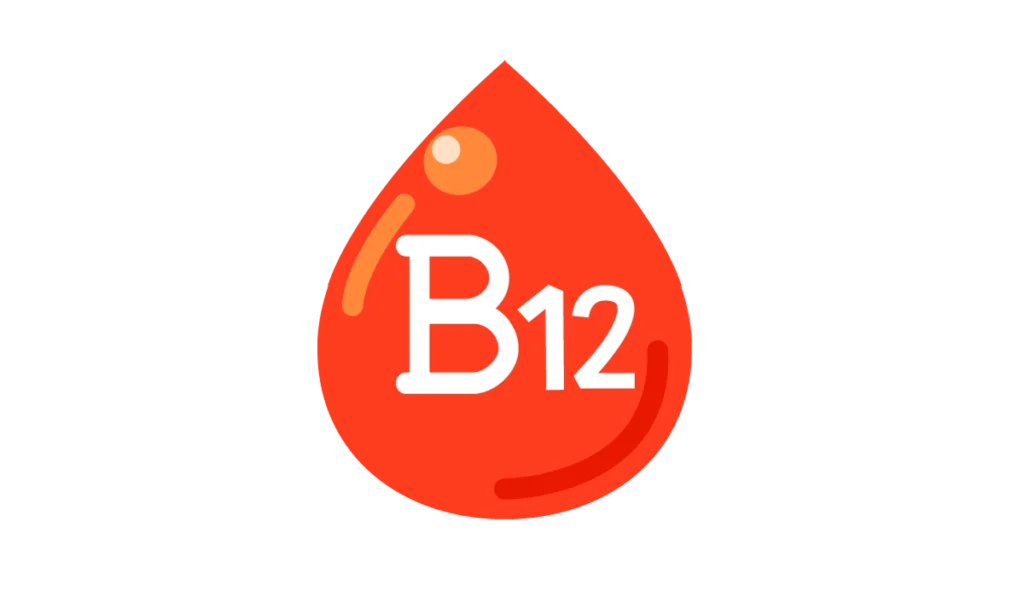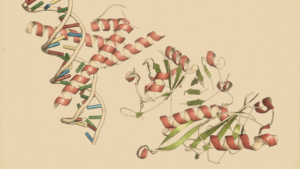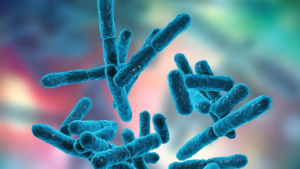Gut Microbiota: 8 Important Roles in Preventing Disease
Unlock the power of your gut microbiota! Discover the 8 crucial roles it plays in disease prevention and how a balanced gut can lead to a better life.

In This Article:
Key Points
- The large intestine harbors over 70% of the body's microorganisms, with a vast array of over 1,000 bacterial species and 1014 bacterial cells.
- Next-generation sequencing (NGS) of microbial DNA has revolutionized our understanding of human microbiota, showcasing the integral role of gut microbiota (GM) in human health.
- GM plays a vital role in our nutrition, metabolism, and immune response, contributing to essential processes such as vitamin and neurotransmitter synthesis.
- The "estrogen-gut microbiome axis" highlights the significant relationship between GM, estrogen levels, and bone health.
- While GM produces beneficial molecules, it can also produce harmful metabolites like lipopolysaccharide (LPS), which has been linked to chronic diseases.
- Our GM begins to form at birth, influenced by factors like diet, sleep, and exercises, and changes over time, often reducing in diversity and stability with age.
- Lifestyle choices such as diet, sleep, and exercise significantly shape GM, impacting its composition and function, and subsequently our health.
- Dysbiosis of GM can lead to various diseases, and its composition is profoundly connected to our immune system, affecting immune cell formation and potentially leading to systemic inflammation and pain.
World of Gut Microbiota (GM)
The large intestine is a bustling metropolis, home to over 70% of the body's microorganisms A Trusted Source Jandhyala, S. M., Talukdar, R., Subramanyam, C., Vuyyuru, H., Sasikala, M., and Nageshwar Reddy, D. (2015). Role of the normal gut microbiota.World J. Gastroenterol.21, 8787–8803. doi: 10.3748/wjg.v21.i29.8787 PubMed AbstractCrossRef Full TextGoogle Scholar .
The term gut microbiota (GM) encompasses the various microorganisms—commensal, symbiotic, and pathogenic—occupying our intestines.
This diverse collection has evolved alongside humans, influencing our health and well-being through complex interactions A Trusted Source Qin, J., Li, R., Raes, J., Arumugam, M., Burgdorf, K. S., Manichanh, C., et al. (2010). A human gut microbial gene catalogue established by metagenomic sequencing.Nature464, 59–65. doi: 10.1038/nature08821 PubMed AbstractCrossRef Full TextGoogle Scholar .

In the vast world of the human gut, over 1,000 bacterial species and 1014 bacterial cells exist A Trusted Source Chen, Y., Wang, X., Zhang, C., Liu, Z., Li, C., and Ren, Z. (2022b). Gut microbiota and bone diseases: a growing partnership.Front. Microbiol.13:877776. doi: 10.3389/fmicb.2022.877776 PubMed AbstractCrossRef Full TextGoogle Scholar .
Yet, the true diversity of anaerobic bacteria remains elusive, often escaping traditional culture techniques.
Thankfully, modern science has gifted us with high-throughput "next-generation sequencing" (NGS) of microbial DNA, revolutionizing our ability to unravel the mysteries of human microbiota.
This innovative technology has thrust GM into the spotlight, highlighting its integral role in human health.
When in harmony, GM is our ally, playing a vital role in nutrition, metabolism, and immune response while safeguarding against pathogenic invasion.
Conversely, a disrupted GM can be our foe, potentially leading to inflammation, pain, and various diseases.
Embracing and understanding this microscopic universe is essential for unlocking the secrets to optimal health.
The Marvelous Role of Gut Microbiota in Our Health
GM: A Silent Powerhouse of Nutrients and Metabolites
The human gut isn't just responsible for digestion.
It's an active site where numerous beneficial processes occur, thanks to the presence of GM.
This intricate microbial community helps ferment dietary fibers, producing essential components like bile acids which aid in calcium absorption.

GM also plays a role in synthesizing vitamins B and K, along with important amino acids, short-chain fatty acids (SCFA), and even neurotransmitters A Trusted Source Ibrahim, I., Syamala, S., Ayariga, J. A., Xu, J., Robertson, B. K., Meenakshisundaram, S., et al. (2022). Modulatory Effect of Gut Microbiota on the Gut-Brain, Gut-Bone Axes, and the Impact of Cannabinoids.Metabolites.12. doi: 10.3390/metabo12121247 CrossRef Full TextGoogle Scholar .
Some even regard GM as an endocrine organ due to its profound impact on distant organs A Trusted Source Clarke, G., Stilling, R. M., Kennedy, P. J., Stanton, C., Cryan, J. F., and Dinan, T. G. (2014). Minireview: gut microbiota: the neglected endocrine organ.Mol. Endocrinol.28, 1221–1238. doi: 10.1210/me.2014-1108 PubMed AbstractCrossRef Full TextGoogle Scholar .
GM’s Interplay with Estrogen and Bone Health
GM has a subtle influence on our bone health.
It's involved in processes like calcium absorption and vitamin K production, which are essential for bone strength A Trusted Source Chen, Y., Wang, X., Zhang, C., Liu, Z., Li, C., and Ren, Z. (2022b). Gut microbiota and bone diseases: a growing partnership.Front. Microbiol.13:877776. doi: 10.3389/fmicb.2022.877776 PubMed AbstractCrossRef Full TextGoogle Scholar .
Interestingly, GM impacts estrogen levels, a crucial hormone for bone health.
A diverse GM ensures optimal estrogen levels.
However, disruptions in GM can lead to decreased estrogen, potentially increasing the risk for conditions like postmenopausal osteoporosis A Trusted Source Baker, J. M., Al-Nakkash, L., and Herbst-Kralovetz, M. M. (2017). Estrogen-gut microbiome axis: physiological and clinical implications.Maturitas103, 45–53. doi: 10.1016/j.maturitas.2017.06.025 PubMed AbstractCrossRef Full TextGoogle Scholar .
This intricate relationship between GM and estrogen is often termed the "estrogen-gut microbiome axis".
Neurotransmitters, SCFA, and Pain Management
B vitamins, particularly B12, are recognized for their pain-relieving properties A Trusted Source Tonelli Enrico, V., Vo, N., Methe, B., Morris, A., and Sowa, G. (2022). An unexpected connection: a narrative review of the associations between gut microbiome and musculoskeletal pain.Eur. Spine J.31, 3603–3615. doi: 10.1007/s00586-022-07429-y PubMed AbstractCrossRef Full TextGoogle Scholar .
Moreover, SCFA, produced in the colon by GM, is vital for controlling intestinal inflammation and regulating various metabolic processes, such as bone metabolism, appetite, and even sleep A Trusted Source Lucas, S., Omata, Y., Hofmann, J., Böttcher, M., Iljazovic, A., Sarter, K., et al. (2018). Short-chain fatty acids regulate systemic bone mass and protect from pathological bone loss.Nat. Commun.9:55. doi: 10.1038/s41467-017-02490-4CrossRef Full TextGoogle Scholar .
Neurotransmitters like dopamine and serotonin, which play roles in mood regulation, pain, and inflammation, have close ties with GM.
Remarkably, a significant portion of these neurotransmitters is produced in the gut A Trusted Source Vidal, P. M., and Pacheco, R. (2020). The cross-talk between the dopaminergic and the immune system involved in schizophrenia.Front. Pharmacol.11:394. doi: 10.3389/fphar.2020.00394PubMed AbstractCrossRef Full TextGoogle Scholar .
Furthermore, other neurotransmitters like noradrenaline and GABA have important functions in pain processing A Trusted Source Tonelli Enrico, V., Vo, N., Methe, B., Morris, A., and Sowa, G. (2022). An unexpected connection: a narrative review of the associations between gut microbiome and musculoskeletal pain.Eur. Spine J.31, 3603–3615. doi: 10.1007/s00586-022-07429-yPubMed AbstractCrossRef Full TextGoogle Scholar .
A Double-Edged Sword: The Good and Bad of GM
While GM contributes many beneficial molecules to our system, it can also produce harmful ones.
Lipopolysaccharide (LPS), a metabolite from certain bacteria, promotes inflammation.
Elevated LPS levels have been observed in several chronic diseases, including obesity, osteoporosis, and various spine-related disorders A Trusted Source Wu, X., Zhao, K., Fang, X., Lu, F., Zhang, W., Song, X., et al. (2021). Inhibition of lipopolysaccharide-induced inflammatory bone loss by saikosaponin D is associated with regulation of the RANKL/RANK pathway.Drug Des. Devel. Ther.15, 4741–4757. doi: 10.2147/DDDT.S334421 PubMed AbstractCrossRef Full TextGoogle Scholar .
Thus, GM can have both protective and detrimental effects on structures like bones, ligaments, and muscles, and may be linked with spinal degenerative diseases (SDD) and pain associated with them A Trusted Source Charles, J. F., Ermann, J., and Aliprantis, A. O. (2015). The intestinal microbiome and skeletal fitness: connecting bugs and bones.Clin. Immunol.159, 163–169. doi: 10.1016/j.clim.2015.03.019PubMed AbstractCrossRef Full TextGoogle Scholar .
Dysbiosis of GM
Initial Acquisition and Diversity of Gut Microbiota (GM)
Our gut microbiota (GM) is a complex and dynamic ecosystem that begins to form at birth, primarily influenced by our mothers A Trusted Source Chen, Y., Wang, H., Lu, W., Wu, T., Yuan, W., Zhu, J., et al. (2022a). Human gut microbiome aging clocks based on taxonomic and functional signatures through multi-view learning.Gut Microbes14:2025016. doi: 10.1080/19490976.2021.2025016 PubMed AbstractCrossRef Full TextGoogle Scholar .

In a state of optimal health, our GM boasts a rich and diverse composition, exhibiting stability and resilience against various disturbances A Trusted Source Das, B., and Nair, G. B. (2019). Homeostasis and dysbiosis of the gut microbiome in health and disease.J. Biosci.44:117. doi: 10.1007/s12038-019-9926-y CrossRef Full TextGoogle Scholar .
However, it's important to note that our GM composition is not static; it evolves and changes as we age, and can be affected by environmental and lifestyle factors such as diet, sleep, and exercise A Trusted Source Fei, N., Choo-Kang, C., Reutrakul, S., Crowley, S. J., Rae, D., Bedu-Addo, K., et al. (2021). Gut microbiota alterations in response to sleep length among African-origin adults.PLoS One16:e0255323. doi: 10.1371/journal.pone.0255323 PubMed AbstractCrossRef Full TextGoogle Scholar .
The Aging Gut: How GM Changes with Time
As we grow older, our GM composition undergoes significant changes.
Older adults typically have a GM characterized by reduced diversity and stability, decreased ability to degrade glycoconjugates, and enrichment of certain bacteria types that can be harmful A Trusted Source Buford, T. W. (2017). (dis)trust your gut: the gut microbiome in age-related inflammation, health, and disease.Microbiome5:80. doi: 10.1186/s40168-017-0296-0 PubMed AbstractCrossRef Full TextGoogle Scholar .
Interestingly, reduced diversity in GM has been correlated with the "frailty index," which is an indicator of biological age and a predictor of life expectancy A Trusted Source Ke, S., Mitchell, S. J., MacArthur, M. R., Kane, A. E., Sinclair, D. A., Venable, E. M., et al. (2021). Gut microbiota predicts healthy late-life aging in male mice.Nutrients13:3290. doi: 10.3390/nu13093290 PubMed AbstractCrossRef Full TextGoogle Scholar .
Additionally, aging affects the gut's physical structure and its protective functions, which can lead to systemic inflammation often seen in older adults A Trusted Source Borghesan, M., Hoogaars, W. M. H., Varela-Eirin, M., Talma, N., and Demaria, M. (2020). A senescence-centric view of aging: implications for longevity and disease.Trends Cell Biol.30, 777–791. doi: 10.1016/j.tcb.2020.07.002 PubMed AbstractCrossRef Full TextGoogle Scholar .
A notable aspect of aging is cellular senescence, which results in an accumulation of senescent cells (SCs) in tissues and organs.
These SCs can secrete inflammatory cytokines, contributing to chronic inflammation and increasing the risk of diseases and mortality in older adults A Trusted Source Sharma, R. (2022). Emerging interrelationship between the gut microbiome and cellular senescence in the context of aging and disease: perspectives and therapeutic opportunities.Probiotics Antimicrob. Proteins14, 648–663. doi: 10.1007/s12602-021-09903-3 PubMed AbstractCrossRef Full TextGoogle Scholar A Trusted Source Tuttle, C. S. L., Luesken, S. W. M., Waaijer, M. E. C., and Maier, A. B. (2021). Senescence in tissue samples of humans with age-related diseases: a systematic review.Ageing Res. Rev.68:101334. doi: 10.1016/j.arr.2021.101334 PubMed AbstractCrossRef Full TextGoogle Scholar .
Research has shown that neutralizing oxidative and inflammatory stress can potentially delay the accumulation of SCs A Trusted Source Varela-Eirín, M., Carpintero-Fernández, P., Sánchez-Temprano, A., Varela-Vázquez, A., Paíno, C. L., Casado-Díaz, A., et al. (2020). Senolytic activity of small molecular polyphenols from olive restores chondrocyte redifferentiation and promotes a pro-regenerative environment in osteoarthritis.Aging (Albany NY)12, 15882–15905. doi: 10.18632/aging.103801 PubMed AbstractCrossRef Full TextGoogle Scholar .
Furthermore, senolytics, which are compounds that target SCs, have shown promising results in clinical trials A Trusted Source Kumar, R., Sharma, A., Kumari, A., Gulati, A., Padwad, Y., and Sharma, R. (2019). Epigallocatechin gallate suppresses premature senescence of preadipocytes by inhibition of PI3K/Akt/mTOR pathway and induces senescent cell death by regulation of Bax/Bcl-2 pathway.Biogerontology20, 171–189. doi: 10.1007/s10522-018-9785-1 PubMed AbstractCrossRef Full TextGoogle Scholar .
GM plays a crucial role in our aging process, as various metabolites of GM have strong anti-inflammatory and antioxidant properties that can be beneficial in preventing age-related inflammatory and tumorigenic environments A Trusted Source Rossi, T., Vergara, D., Fanini, F., Maffia, M., Bravaccini, S., and Pirini, F. (2020). Microbiota-derived metabolites in tumor progression and metastasis.Int. J. Mol. Sci.21:5786. doi: 10.3390/ijms21165786 PubMed AbstractCrossRef Full TextGoogle Scholar .
However, an imbalance in GM, known as dysbiosis, can lead to chronic inflammation and may promote cellular senescence, affecting the development and prognosis of senescence-associated diseases (SDD).
Lifestyle and GM: The Impact of Diet, Sleep, and Exercise
In a nutshell, our lifestyle choices, specifically diet, sleep, and exercise, play a crucial role in shaping our gut microbiota (GM), affecting both its composition and function A Trusted Source Ohlsson, C., and Sjögren, K. (2015). Effects of the gut microbiota on bone mass.Trends Endocrinol. Metab.26, 69–74. doi: 10.1016/j.tem.2014.11.004 PubMed AbstractCrossRef Full TextGoogle Scholar .
First off, our diet can significantly influence GM, with nutrients impacting the microenvironment of GM, consequently altering its composition, metabolism, and immune response A Trusted Source Li, Y., Luo, W., Deng, Z., and Lei, G. (2016). Diet-intestinal microbiota axis in osteoarthritis: a possible role.Mediat. Inflamm.2016:3495173. doi: 10.1155/2016/3495173 PubMed AbstractCrossRef Full TextGoogle Scholar .
Next, sleep, or lack thereof, has a profound impact on our GM.
Inadequate sleep can lead to a less diverse GM, which is linked to chronic inflammation-related diseases A Trusted Source Reynolds, A. C., Paterson, J. L., Ferguson, S. A., Stanley, D., Wright, K. P., and Dawson, D. (2017). The shift work and health research agenda: considering changes in gut microbiota as a pathway linking shift work, sleep loss and circadian misalignment, and metabolic disease.Sleep Med. Rev.34, 3–9. doi: 10.1016/j.smrv.2016.06.009 PubMed AbstractCrossRef Full TextGoogle Scholar .
Sleep disruptions also contribute to hormonal and metabolic disturbances, increasing the risk of diabetes and obesity A Trusted Source Leproult, R., Holmbäck, U., and Van Cauter, E. (2014). Circadian misalignment augments markers of insulin resistance and inflammation, independently of sleep loss.Diabetes63, 1860–1869. doi: 10.2337/db13-1546 PubMed AbstractCrossRef Full TextGoogle Scholar.
Lastly, exercise is a key player in maintaining a healthy GM.

Studies have shown that physical activity can bring about positive changes in GM's composition and metabolic functions, providing numerous health benefits A Trusted Source Ticinesi, A., Lauretani, F., Tana, C., Nouvenne, A., Ridolo, E., and Meschi, T. (2019). Exercise and immune system as modulators of intestinal microbiome: implications for the gut-muscle axis hypothesis.Exerc. Immunol. Rev.25, 84–95.PubMed AbstractGoogle Scholar .
Regular exercise can enhance GM's stability, thereby benefiting older adults, particularly those who are overweight A Trusted Source Zhu, Q., Jiang, S., and Du, G. (2020). Effects of exercise frequency on the gut microbiota in elderly individuals.Microbiology9:e1053. doi: 10.1002/mbo3.1053PubMed AbstractCrossRef Full TextGoogle Scholar .
Causes and Effects of GM Dysbiosis: From Lifestyle to Disease
Your gut microbiota (GM) is like a unique fingerprint, significantly shaped by factors like age, diet, smoking, alcohol consumption, disease, antibiotics, and pathogens A Trusted Source Zheng, D., Liwinski, T., and Elinav, E. (2020). Interaction between microbiota and immunity in health and disease.Cell Res.30, 492–506. doi: 10.1038/s41422-020-0332-7 PubMed AbstractCrossRef Full TextGoogle Scholar .
When these factors tip the balance, they can lead to dysbiosis, a state where harmful changes in your GM occur, potentially leading to inflammation and disease A Trusted Source Kinashi, Y., and Hase, K. (2021). Partners in leaky gut syndrome: intestinal dysbiosis and autoimmunity.Front. Immunol.12:673708. doi: 10.3389/fimmu.2021.673708 PubMed AbstractCrossRef Full TextGoogle Scholar .
A prime example of this is the "leaky gut syndrome," where the protective barrier of your intestine becomes compromised, allowing harmful substances to enter your bloodstream and trigger a systemic inflammatory and abnormal immune response A Trusted Source Ohlsson, C., and Sjögren, K. (2015). Effects of the gut microbiota on bone mass.Trends Endocrinol. Metab.26, 69–74. doi: 10.1016/j.tem.2014.11.004 PubMed AbstractCrossRef Full TextGoogle Scholar .
This disruption can have far-reaching impacts beyond your gut. In ophthalmology, GM dysbiosis has been linked to chronic low-grade inflammation and exacerbated pathological angiogenesis, a process that plays a crucial role in various eye diseases A Trusted Source Andriessen, E. M., Wilson, A. M., Mawambo, G., Dejda, A., Miloudi, K., Sennlaub, F., et al. (2016). Gut microbiota influences pathological angiogenesis in obesity-driven choroidal neovascularization.EMBO Mol. Med.8, 1366–1379. doi: 10.15252/emmm.201606531 PubMed AbstractCrossRef Full TextGoogle Scholar .
But the impacts don't stop there.
Dysbiosis can also pave the way for a slew of other diseases, from metabolic diseases like diabetes to cardiovascular diseases, neurodegenerative conditions, and even cancer A Trusted Source DeStefano Shields, C. E., White, J. R., Chung, L., Wenzel, A., Hicks, J. L., Tam, A. J., et al. (2021). Bacterial-driven inflammation and mutant BRAF expression combine to promote murine colon tumorigenesis that is sensitive to immune checkpoint therapy.Cancer Discov.11, 1792–1807. doi: 10.1158/2159-8290.CD-20-0770 PubMed AbstractCrossRef Full TextGoogle Scholar A Trusted Source Sepich-Poore, G. D., Zitvogel, L., Straussman, R., Hasty, J., Wargo, J. A., and Knight, R. (2021). The microbiome and human cancer.Science371:eabc4552. doi: 10.1126/science.abc4552 CrossRef Full TextGoogle Scholar .
Moreover, the connection between GM and your immune system is profound.
Research suggests that the metabolites from your gut bacteria can affect immune cells in your bone marrow,
which in turn, can have implications for immune cell formation in your spinal bone marrow and potentially lead to systemic inflammation and back pain A Trusted Source Nouh, M. R., and Eid, A. F. (2015). Magnetic resonance imaging of the spinal marrow: basic understanding of the normal marrow pattern and its variant.World J. Radiol.7, 448–458. doi: 10.4329/wjr.v7.i12.448 PubMed AbstractCrossRef Full TextGoogle Scholar .
Exploring the Sterility of Spinal Structures
Thanks to advancements like 16S rRNA sequencing and shotgun metagenomics, we now know that bacteria reside in places once thought sterile, including the reproductive tract, sperm, fetus, breast, and eye A Trusted Source Ozkan, J., and Willcox, M. D. (2019). The ocular microbiome: molecular characterisation of a unique and low microbial environment.Curr. Eye Res.44, 685–694. doi: 10.1080/02713683.2019.1570526 PubMed AbstractCrossRef Full TextGoogle Scholar .
This discovery has reshaped our understanding of microbiomes and their presence outside traditional joint environments.
During the neovascularization phase of osteoarthritis (OA), bacteria, and bacterial products may infiltrate cartilage and subchondral bone, which are typically less vascularized A Trusted Source Pesesse, L., Sanchez, C., and Henrotin, Y. (2011). Osteochondral plate angiogenesis: a new treatment target in osteoarthritis.Joint Bone Spine78, 144–149. doi: 10.1016/j.jbspin.2010.07.001PubMed AbstractCrossRef Full TextGoogle Scholar .
Evidence of microbiomes has been found in knee and hip OA (Dunn et al., 2020), as well as in degenerated intervertebral discs (IVDs) A Trusted Source Granville Smith, I., Danckert, N. P., Freidin, M. B., Wells, P., Marchesi, J. R., and Williams, F. M. K. (2022). Evidence for infection in intervertebral disc degeneration: a systematic review.Eur. Spine J.31, 414–430. doi: 10.1007/s00586-021-07062-1PubMed AbstractCrossRef Full TextGoogle Scholar .
Dysbiosis, or the imbalance of gut microbiota (GM), can lead to impaired intestinal barrier function and a weakened immune system.
This may allow GM to migrate from the gut to the bloodstream, potentially settling directly in joints or using immune cells like leukocytes and macrophages as “Trojan horses” to infiltrate joints and IVDs A Trusted Source Miller, R. J., Malfait, A. M., and Miller, R. E. (2020). The innate immune response as a mediator of osteoarthritis pain.Osteoarthr. Cartil.28, 562–571. doi: 10.1016/j.joca.2019.11.006 PubMed AbstractCrossRef Full TextGoogle Scholar .
These migrations can contribute to deformity changes in subchondral bone marrow and cartilage or discs A Trusted Source Chisari, E., Wouthuyzen-Bakker, M., Friedrich, A. W., and Parvizi, J. (2021). The relation between the gut microbiome and osteoarthritis: a systematic review of literature.PLoS One16:e0261353. doi: 10.1371/journal.pone.0261353 PubMed AbstractCrossRef Full TextGoogle Scholar .
The chronic inflammation and adverse immune effects from GM dysbiosis and transient bacteremia may also increase the risk of postoperative infections for spinal degenerative diseases (SDD) A Trusted Source Fine, R. L., Manfredo Vieira, S., Gilmore, M. S., and Kriegel, M. A. (2020). Mechanisms and consequences of gut commensal translocation in chronic diseases.Gut Microbes11, 217–230. doi: 10.1080/19490976.2019.1629236PubMed AbstractCrossRef Full TextGoogle Scholar.
Discussion
In the intricate tapestry of human health, the gut microbiota (GM) stands out as a central character.
These findings underscore the indispensable role that GM plays in various aspects of human physiology, from nutrient synthesis and metabolism to immune system regulation.
The vast population of microorganisms residing in our gut, including over 1,000 bacterial species, serves as a testament to the complexity and intricacy of this microscopic universe.
The interplay between GM and other bodily processes, such as bone health and neurotransmitter production, is fascinating.
The "estrogen-gut microbiome axis" and the production of essential nutrients like vitamins B and K highlight the symbiotic relationship between humans and their gut microbiota.
It is as if we have our own internal pharmacy, meticulously synthesizing compounds that are crucial for our well-being.
However, this relationship is a double-edged sword.
The production of harmful metabolites like lipopolysaccharide (LPS) can tip the balance from beneficial to detrimental, potentially leading to a range of diseases.
This duality of GM as both a protector and potential harm inducer necessitates a nuanced approach to understanding and manipulating it for health benefits.
Conclusion
Embracing the world of gut microbiota is like opening a Pandora's box – albeit one that holds the keys to unlocking optimal health.
The complexity of this microscopic universe is mind-boggling, but our exploration has only scratched the surface.
High-throughput sequencing technologies have opened new vistas, but we must tread carefully, ensuring that our interventions are based on solid scientific understanding.
The gut microbiota is not just a silent witness to our lives; it is an active participant, intricately woven into the fabric of our being.
As we move forward, it is crucial to adopt a holistic approach that considers the myriad ways in which GM influences our health.
This understanding will be pivotal in developing interventions that harness the power of GM to prevent and treat diseases, ultimately unlocking the full potential of this microscopic world within us.
Review date not set.
How we reviewed this article:
Latest on:





